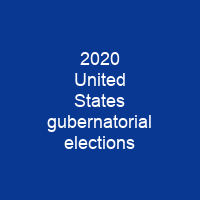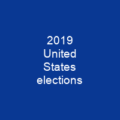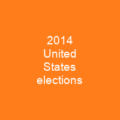The 2020 United States gubernatorial elections were held on November 3, 2020, in 11 states and two territories. The previous gubernatorial elections for this group of states took place in 2016, except in New Hampshire and Vermont where governors only serve two-year terms. Nine state governors ran for reelection and all nine won.
About 2020 United States gubernatorial elections in brief

Several sites and individuals published predictions of competitive seats. These predictions looked at factors such as the strength of the incumbent, the strength. of the candidates, and the partisan leanings of the state. The predictions assigned ratings to each seat, with the rating indicating the predicted advantage that a party has in winning that seat. In Montana, the Republican nominee was Greg Gianforte, who is a controversial figure because he was arrested for body-slamming a reporter the day of a 2017 special election. In Missouri, Republican incumbent Mike Parson assumed office after the resignation of Eric Greitens due to sexual harassment and violations of campaign finance laws, and his lack of name recognition and unpopularity could have made his race against state auditor Nicole Galloway, Missouri’s only Democratic statewide office holder, competitive. In New Hampshire, Republican incumbents Phil Scott of Vermont and Chris Sununu of New Hampshire are ranked among the most popular governors in the United States, and both races were rated likely to be safe Republican. Both are viewed as centrists who attract Democratic and independent voters. In West Virginia, Democratic incumbent Jim Justice faced centrist Democrat Ben Salango, who was endorsed by U.S. Senator Joe Manchin and multiple local unions. In Puerto Rican governor Wanda Vázquez Garced lost the New Progressive primary to Pedro Pierluisi, who ran on both the Democratic and Progressive nominations.
You want to know more about 2020 United States gubernatorial elections?
This page is based on the article 2020 United States gubernatorial elections published in Wikipedia (as of Dec. 06, 2020) and was automatically summarized using artificial intelligence.







